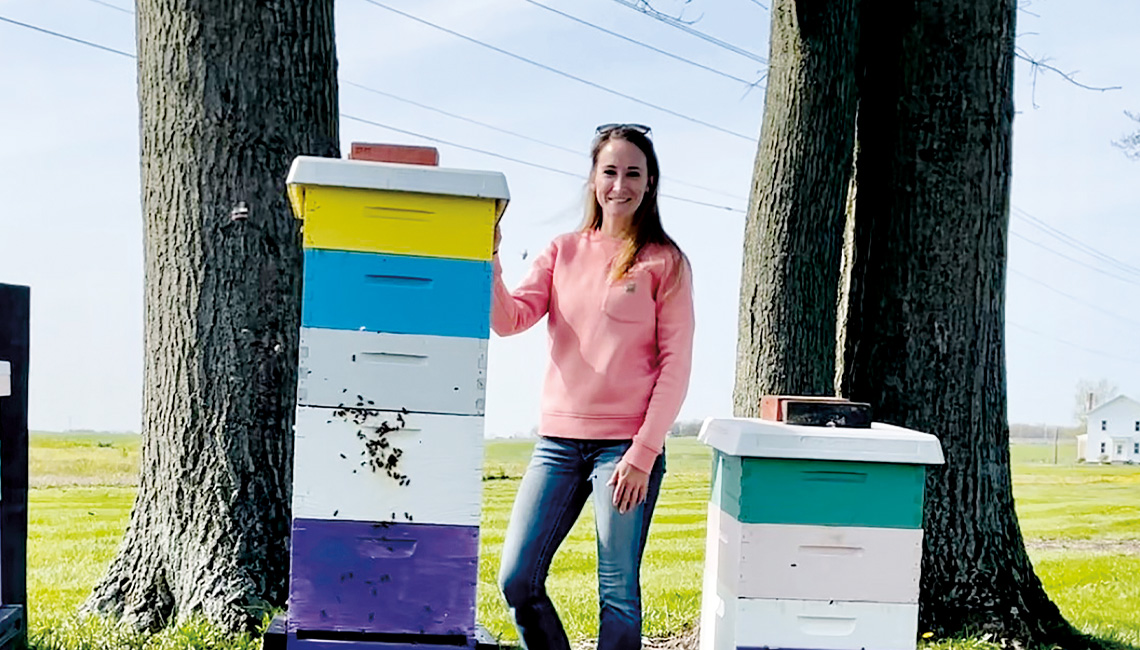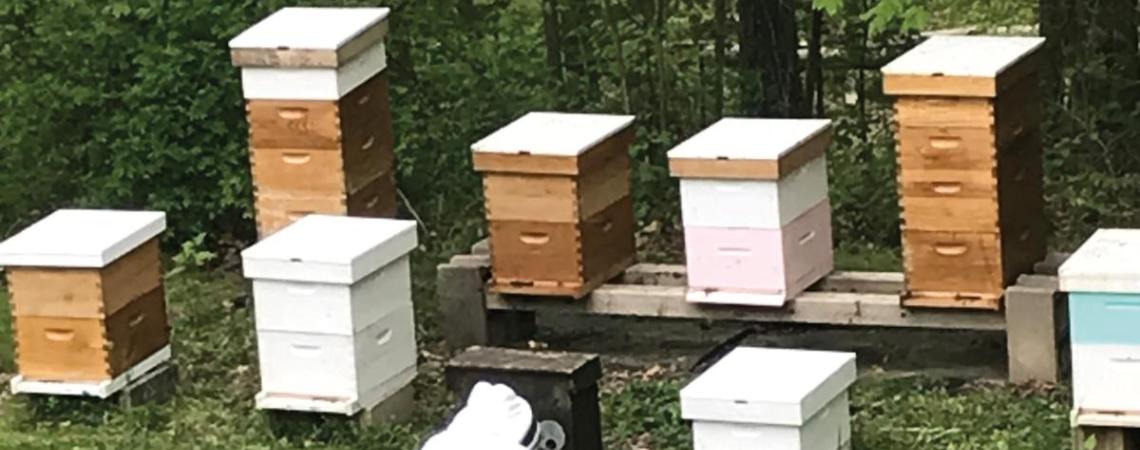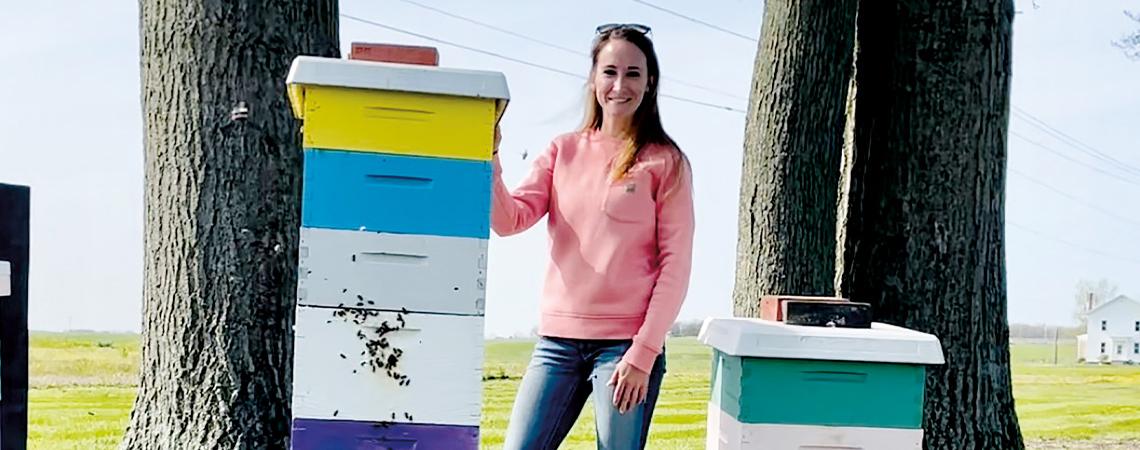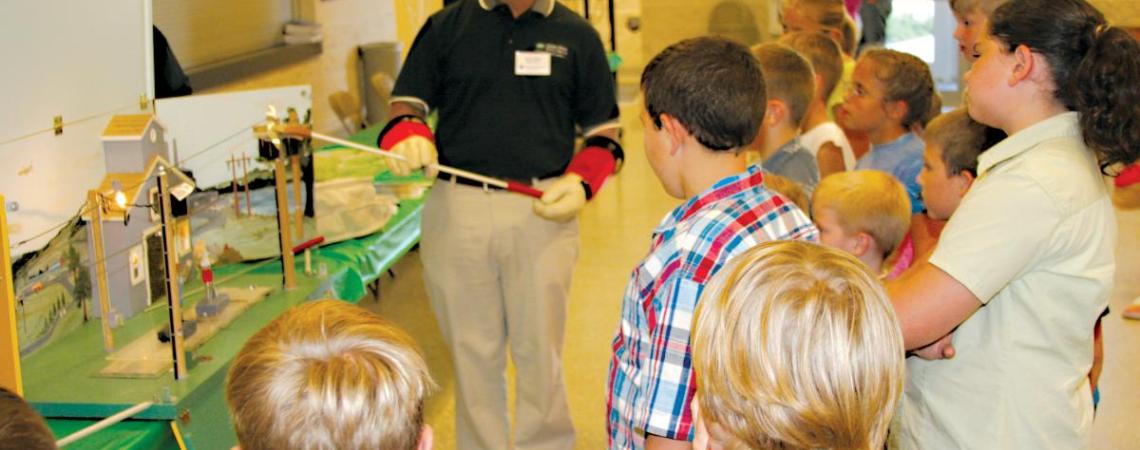Encountering thousands of bees could be a little disconcerting — maybe downright terrifying — for most of us. But two Ohio electric cooperative employees share their backyards with hundreds of thousands of bees, and they say coexisting with the buzzing critters is intriguing, relaxing, and oh-so-sweet.
“In the summertime, my boyfriend and I will walk down by the hives and see what the bees are doing. It’s really interesting to watch them. They’re gentle, they fly in and out, and they leave you alone,” says Missy Davis, staff accountant at Holmes-Wayne Electric Cooperative in Millersburg, who has six hives on her rural property near Wooster.
Stacey Shaw, safety director at Holmes-Wayne Electric, says he often just lies on the ground and watches his 10 hives, each of which, he says, has its own distinct personality.
Likewise, Stacey Shaw, safety director and line supervisor at HWEC, has at least 10 beehives on his property near Millersburg, with up to 100,000 bees in each one. “Sometimes, I lie down on the ground and just watch them,” he says. “Each hive has its own personality. Some are really docile, and then you have some that can be more aggressive. But the term ‘worker bee’? They earn that. As soon as daylight comes, they head out strictly for work; they work nonstop until dark and then do it all over again the next morning.”
Adds Missy: “It’s kind of mind-blowing the vast number of bees that can be in one hive and the amount of work they do. And it’s crazy how much honey they make. They’re really cool creatures.”
Both Missy and Stacey got involved in beekeeping as a hobby, and quickly became infatuated with their tiny livestock. 
“I was looking for something to do when I retire, and I figured bees are something we need for our food supply,” explains Stacey. “After reading about them for 10 years, I decided to do it a couple of winters ago.”
Though it’s simply a hobby, his family has gotten the buzz, too. “Our house has a lot of bee things in it — ‘bee’ this and ‘bee’ that. My daughter even hosted a ‘bride to bee’ wedding shower.”
Missy, who created a “Missy’s Honey” logo for her hobby, experiments with making beeswax lip balms and hand scrubs, but mostly just harvests the honey. “Depending on how good the nectar flow is in the summer, you can end up getting 6 to 8 gallons of honey from each hive,” she explains. “The alfalfa fields and white clover that grow around my home make the honey super sweet.”
She suits up in her protective gear to interact with her bees, after finding out the hard way she’s allergic to bee stings. “I learned real quick that they can get you,” she says. “Now I keep an EpiPen handy. But the more you work with them, the more they recognize you. They’re really pretty gentle.”












